Opinion
Two Press Conferences, Two Futures: Reality vs. Liberal Delusion
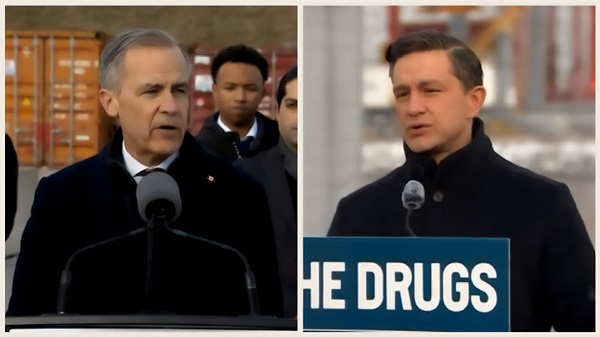
Poilievre lays out a real plan to fight fentanyl and secure Canada’s economy. Carney delivers empty slogans and Trudeau 2.0 talking points.
So let’s talk about two very different press conferences that happened today. One was from Pierre Poilievre, who laid out a serious, detailed plan to crack down on fentanyl traffickers, secure Canada’s borders, and put drug kingpins in prison for life. The other? Mark Carney, the Liberal Party’s unelected golden boy, who stood at a podium, threw out a bunch of vague, focus-grouped slogans, and then told Canadians—with a straight face—that he’s not a politician.
Hold on—HAHAHAHAHA. Let’s just take a second to appreciate how absurd that is.
Mark Carney—the man standing at a podium, announcing his candidacy to lead the Liberal Party, delivering pre-rehearsed political talking points, and desperately trying to sound relatable—is telling you he’s not a politician.
That’s like Justin Trudeau saying he’s not a virtue-signaler. It’s like Joe Biden saying he’s a great public speaker. It’s like CNN saying they just report the news. It’s so obviously untrue that you almost have to admire the sheer arrogance of saying it out loud.
But Carney’s dishonesty didn’t stop there. No, he went on to deliver a speech so full of contradictions, hypocrisy, and Liberal gaslighting that it deserves its own category at the Academy Awards.
Carney’s Fantasy vs. Poilievre’s Reality on the Fentanyl Crisis
Poilievre’s press conference today was dead serious—because the fentanyl crisis is dead serious. He laid out the numbers:
- 50,000 Canadians dead since 2016. More than all the soldiers we lost in World War II.
- A super lab in British Columbia capable of producing enough fentanyl to kill 95 million people.
- 99% of shipping containers coming into Canada go uninspected.
His response? Mandatory life sentences for fentanyl traffickers. 15-year minimums for those caught with smaller amounts. Military-backed border security. 2,000 new CBSA officers to stop fentanyl from coming in at the source.
Now let’s compare that to Carney’s response.
Oh wait—he didn’t have one.
Carney spent his entire press conference talking about “trade diversification” and “economic growth.” Not a single detailed plan for stopping the flow of fentanyl into this country, putting drug traffickers in prison, or protecting Canadian families.
Why? Because the Liberal Party doesn’t actually care about fentanyl. They only started pretending to care because Trump forced them to.
Poilievre called it out perfectly:
“If Donald Trump hadn’t threatened tariffs, Trudeau wouldn’t even be talking about fentanyl.”
And he’s right. Because if Trudeau, Carney, and the Liberals actually cared about fentanyl, they wouldn’t have eliminated mandatory minimums for traffickers with Bill C-5.
Carney’s Laughable “Trade Strategy” vs. Poilievre’s Economic Reality
Carney—who spent most of his career **as an unelected globalist banker—**wants you to believe he has a plan to fix Canada’s economy. His big idea?
“We need to diversify trade away from the U.S.”
Oh, brilliant! Canada should just pivot away from its largest trading partner—the country that buys 75% of our exports—and do business with… who exactly?
China? The same China that’s flooding our country with fentanyl and stealing our intellectual property?
That’s like saying, “I don’t like getting my paycheck from my current job, so I’ll just get paid by a different company!” That’s not how reality works, Mark.
But now Mark Carney wants to diversify trade away from the U.S.? Fascinating. And how exactly does he plan to do that?
Energy East? Oh yeah, you guys killed that. A pipeline that would have let us sell our own oil to our own refineries instead of importing from Saudi Arabia—but nope, too “dirty” for the Liberal climate cult.
Northern Gateway? Oh yeah, canceled that too. That would have gotten Alberta oil to the Pacific, letting us sell to Asia instead of relying on the Americans. But the Liberals shut it down before the first barrel could even roll.
How about LNG exports to Japan? Oh wait—Trudeau’s government said there was “no business case.” Meanwhile, Japan is signing massive deals with Qatar while Canada, sitting on one of the world’s largest gas reserves, does absolutely nothing. Brilliant strategy, Mark.
So what’s the plan here? Sell more maple syrup to Belgium? Hope the French suddenly develop a taste for Tim Hortons coffee? Maybe trade luxury tax credits for electric BMWs? Be serious.
This is the problem with guys like Carney—they live in a world of theoretical trade deals and imaginary supply chains, while the rest of us have to live with reality. And the reality is, Canada depends on the U.S. because Liberal policies have systematically destroyed every alternative.
But sure, Mark. Tell us more about your vision for trade while Canada’s biggest industries are locked out of the global market—because of people like you.
Meanwhile, Poilievre actually acknowledged reality.
“Trump sees weakness, and what does a real estate mogul from New York do when he spots weakness? He pounces.”
This isn’t just about trade. This is about Canada being so economically weak after eight years of Liberal mismanagement that we’re now at the mercy of Trump’s tariffs.
And what did Carney have to say about that? Nothing.
Carney’s Carbon Tax Flip-Flop
And here it is—Carbon Tax 2.0 from Trudeau 2.0.
Mark Carney, the guy who spent years preaching that carbon taxes were the single most powerful tool to fight climate change, is now standing at a podium, pretending he never said that.
“We should eliminate the consumer carbon tax and instead make large polluters pay.”
Oh really? Excuse me? Carney spent his entire career defending carbon taxes, telling struggling Canadians that their skyrocketing gas and heating bills were just part of the “climate transition.” And now, magically, he’s against them?
This isn’t leadership. This is pure, shameless political opportunism.
Let’s get something straight: Mark Carney doesn’t actually care about the carbon tax. What he does care about is winning an election. And right now, even Liberal voters hate the carbon tax. So suddenly, he’s got a new idea—carbon tax for thee, but not for me.
Because, of course, Carney himself never had to pay these taxes. The man made millions as a banker, then made even more at Brookfield Asset Management—a firm that just happens to be heavily invested in fossil fuels. Oh yeah, Carney loved talking about green energy, but when it came to his own paycheck? Fossil fuels were just fine.
This is the classic Liberal formula: They jack up your energy costs, kill your job, and call it a “transition” while making sure their wealthy buddies get exemptions.
Now contrast that with Pierre Poilievre’s response.
Axe the tax.
Yeah, no shit.
While Carney is rebranding the exact same Liberal scam, Poilievre is saying what every Canadian already knows: The carbon tax isn’t saving the planet. It’s just making life unaffordable.
Because here’s the truth: It was never about fighting climate change. It was always about taking your money. And Carney’s latest spin? It’s just the next version of the same scam.
Mark Carney: Trudeau 2.0, Just With a Better Suit
Here’s the bottom line: Poilievre laid out a real plan today—one that actually addresses the fentanyl crisis, border security, and Canada’s economic vulnerabilities.
Carney? He gave a meaningless, bureaucratic speech that could have been written by ChatGPT.
Poilievre talked about real consequences for fentanyl traffickers. Carney didn’t.
Poilievre called out the Liberals’ disastrous economic policies. Carney helped design them.
Poilievre acknowledged Canada’s dependence on the U.S. Carney pretended we could just trade with Europe instead.
And yet, the Liberal Party wants you to believe that Mark Carney is Canada’s next great leader.
Here’s the truth: Carney isn’t new. He isn’t different. He isn’t a “pragmatist.” He’s just Justin Trudeau in a better suit, with a fancier resume, and the exact same failed policies.
And if Canadians fall for this scam, we’ll get four more years of Trudeau-style incompetence—just with a British accent.
Subscribe to The Opposition with Dan Knight .
For the full experience, upgrade your subscription.
International
Boris Johnson Urges Ukraine to Continue War

By Martin Armstrong
Trump’s proposal for peace in Ukraine has been met with an overwhelming condemnation from the world’s neocons. Former UK Prime Minister Boris Johnson reemerges from the shadows whenever he hears word that a war may be winding down. He played an instrumental role in persuading Zelensky not to negotiate a peace treaty with Russia when it was apparent that Ukraine could not easily win, and now, Johnson is urging Ukraine to continue the war.
“Imagine that you are Vladimir V. Putin and you are spending a calm Saturday in the Kremlin… You casually watch the television news, and you cannot help but smile at the incompetence of your opponents, at the astonishing weakness of the West. You have lost more than a million soldiers, killed and wounded, in your attempts to subdue Ukraine. You have still failed to capture more than 20 percent of the country’s territory. Your economy is faltering. And now they are talking about some new 28-point plan to end the war – and it could have been written entirely by the Kremlin,” Johnson warned.
In typical neocon fashion, Johnson wants to paint the proposal as a victory for Russia. He acknowledges millions have died, but since they are Russian, their lives do not matter. Continue the slaughter at the expense of the people.
Johnson declared that Britain was in a proxy war with Russia back in November 2024. “It has been pathetic… Let’s face it: We’re waging a proxy war but not giving our proxies the ability to do the job. For years now, we’ve been allowing them to fight with one hand tied behind their backs, and it has been cruel,” he admitted one year ago. Why would Britain feel threatened by Russia? Why would any sane leader thrust their people into a battle that is not theirs to fight?
The head of M16, Sir Richard Moore, also came out in November 2024, admitting British intelligence was discreetly fighting on behalf of Ukraine. “We cherish our heritage of covert action, which we keep alive today in helping Ukraine resist the Russian invasion,” Moore commented.
Moore and Johnson know that Russia has no incentive to invade Europe, especially Britian. There is absolutely nothing for Putin to gain. Europe, on the other hand, has everything to gain through conflict with Russia. They see Ukraine as the ultimate entryway into Russia
War is a great way to default on debts. You get to form a new government, and they always disavow the debts of the previous government. Europe has been committing economic suicide. Between the COVID-19 Lockdowns, the NET-ZERO Climate Change, and then the sanctions on Russia that doubled their fuel costs, you could not ask for a more brain-dead group of politicians who have ZERO comprehension of even how the economy functions.
Plain and simple—Russia invaded due to the West’s failure to honor the Minsk Agreement. The neocons disregard the proposal entirely and conveniently disregard the original signed agreement when discussing conceding territory.
“The document offers Ukrainians not only to give up any attempts to reclaim Crimea or Donbas, but also to cede vast territories, including about 250,000 Ukrainians whom the Russians do not even control. Of course, you knew your negotiators would try something like that. But you never believed anyone would take this seriously. You can’t believe that President Trump would back this plan, because it is a complete betrayal of Ukraine,” Johnson continued in his recent writing.
LET THE PEOPLE VOTE! The ethnically Russian people living in Ukraine have been unable to decide on their leadership. Zelensky outlawed their religion and language. Everyone believes they are protecting the people in these regions from the other side, but only one side is open to learning the people’s wishes. The 28-point plan saves the PEOPLE of both Russia and Ukraine. Russia cannot abandon the war without guarantees that NATO will back down and Ukraine is merely an EU puppet. Zelensky now has two days to decide whether he is willing to destroy his nation for the neocons.
Daily Caller
EXCLUSIVE: Here’s An Inside Look At The UN’s Disastrous Climate Conference


From the Daily Caller News Foundation
By Audrey Streb
The United Nations’ annual climate conference concluded Saturday, and some critics in attendance told the Daily Caller News Foundation that it was a chaotic affair.
After Thursday’s fire forced an evacuation and temporarily halted the talks, COP30 was prolonged by an extra day. Corporate media outlets and green groups critiqued the final agreement reached on Saturday, arguing that it did not do enough to restrict carbon emissions. The environmental groups claimed the resolution departed from COP28’s declaration which called for an end to fossil fuels.
Hosted in Belém, Brazil, COP30 provoked backlash after developers razed the Amazon rainforest ahead of the climate talks and China worked to seize the spotlight in America’s absence. Craig Rucker, co-founder and president of the conservative nonprofit known as the Committee for a Constructive Tomorrow,(CFACT) told the DCNF that this year’s UN climate talks were especially chaotic and disorganized.
Dear Readers:
As a nonprofit, we are dependent on the generosity of our readers.
Please consider making a small donation of any amount here.
Thank you!
“I’ve been to 27 of the 30 conferences. … What you see on the ground is just how chaotic it’s gotten. There was a certain chaos in the past, but this was particularly disorganized because they picked a venue that I think was unsuited for all the delegates that were coming in,” Rucker told the DCNF in an interview. “They wanted to emphasize the rainforest, yet hypocritically, they’re chopping them down to accommodate delegates flying in on private jets.”
The UN did not respond to the DCNF’S request for comment.
Rucker and Marc Morano, who publishes CFACT’s ClimateDepot.com, ventured into the Amazon rainforest to investigate the four-lane highway initially reported by BBC in March. Rucker told the DCNF that Brazil was “still cutting and burning. We heard the chainsaws ourselves, and this is something they [the Brazilian state] try to keep [quiet].”
The highway, known as Avenida Liberdade, was shelved multiple times in the past due to environmental concerns but revived as part of a broader push to modernize Belém ahead of COP30, according to the outlet. State officials say the development efforts will leave a lasting legacy, including an expanded airport, new hotels and an ungraded port to accommodate cruise ships.
The Brazilian state denied that the highway was built for the climate conference, noting that plans for the road were underway as early as 2020 — well before Brazil was selected to host COP30, Reuters reported in March.
President Donald Trump sharply criticized the conference for deforesting portions of the Amazon to ease travel for environmentalist attendees. The U.S. did not send an official delegation this year.
Democratic California Gov. Gavin Newsom and Democratic Rhode Island Sen. Sheldon Whitehouse attended the talks, where they denounced the Trump administration’s energy policies and absence.
A top United Nations official reportedly directed Brazilian authorities to address concerns including leaky light fixtures, sweltering heat and lackluster security at the conference, according to Bloomberg News. Days later, the fire broke out.
Morano also documented water pouring from vents, and Rucker told the DCNF that attendees were not allowed to flush toilet paper as the venue “didn’t have a septic system.”
Rucker also recalled what he described as elitism, noting that delegates were in the “blue zone” while other attendees and indigenous groups were relegated to the “green zone.”
“The blue zone is where the official delegates go, the people that are from Spain, Portugal, Brazil. … And these are the people that make the decisions,” Rucker said. “The indigenous people, they say, don’t have a voice allowed in there. That’s partially why they crashed it.”
Though COP30 did host several events featuring indigenous voices, some native groups stormed the COP30 venue the first week, demanding their voice be heard by the UN.
Rucker told the DCNF that China seemed to have become a “new leader” on the environmentalism and green energy front at the climate conference, though the oriental nation is “pumping out with two coal plants per week.”
Recent media reports have hailed China as a giant in building out “renewables,” though China is far from dependent on intermittent resources like solar and wind as it also churns out new coal plants and is the world’s top emitter.
“They genuinely looked at China as the world leader on climate change,” Rucker noted, branding it as “totally bizarre.”
Rucker recalled that upon the entrance of the “blue zone,” there was a “very impressive Chinese booth.”
Additionally, a statue demeaning Trump stood outside COP30, according to Reuters, as well as a horned jaguar-dragon hybrid statue with its hands gripping the globe. The fanged construction purportedly represented China and Brazil partnering to protect the rainforest.
“The statues are purely political statements: one symbolizes how communism is alive and well in Brazil and China, and the other is a misguided attempt to shame or critique Trump,” Director of the Arthur B. Robinson Center on Climate and Environmental Policy at The Heartland Institute Sterling Burnett told the DCNF. “Trump’s promotion of fossil-fuel development and broader use — especially encouraging developing countries to tap into affordable energy — will do more to help children in poor countries than all the climate agreements and green energy scams combined.”
-

 Alberta1 day ago
Alberta1 day agoPremier Smith explains how private clinics will be introduced in Alberta
-
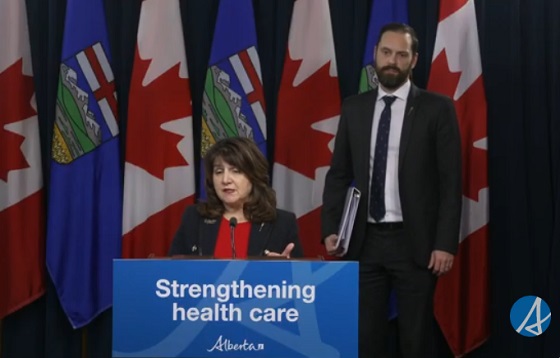
 Alberta1 day ago
Alberta1 day agoAlberta introducing dual practice health care model to increase options and shorten wait times while promising protection for publicly funded services
-
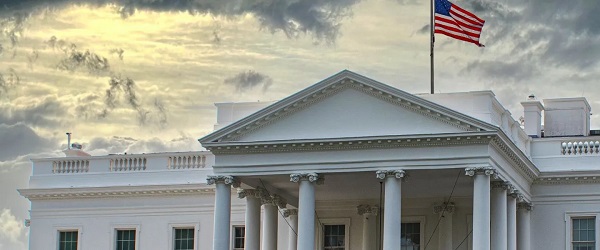
 Business1 day ago
Business1 day agoUS Supreme Court may end ‘emergency’ tariffs, but that won’t stop the President
-
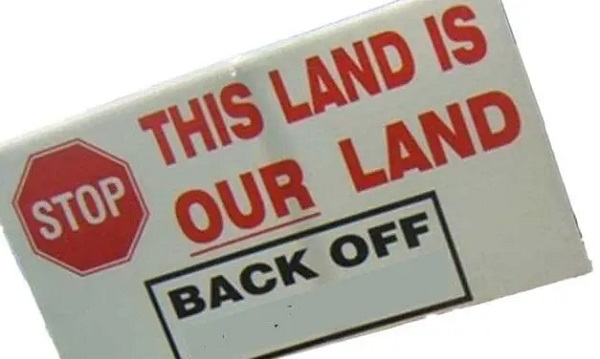
 Aristotle Foundation1 day ago
Aristotle Foundation1 day agoWe’re all “settlers”
-
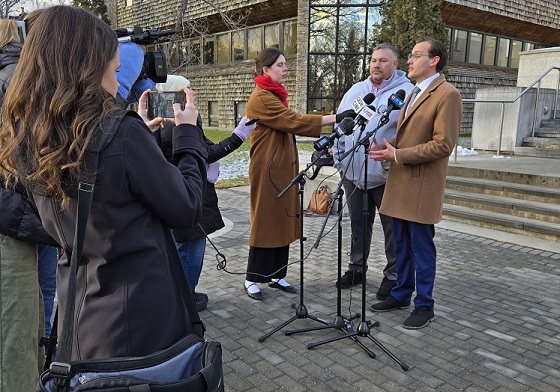
 Indigenous23 hours ago
Indigenous23 hours agoIndigenous activist wins landmark court ruling for financial transparency
-
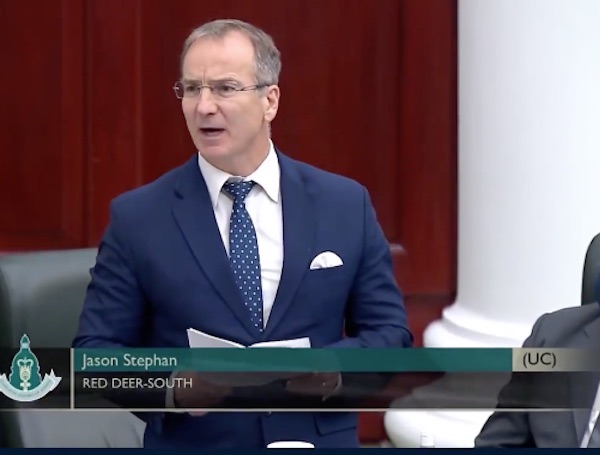
 Alberta23 hours ago
Alberta23 hours agoRed Deer’s Jason Stephan calls for citizen-led referendum on late-term abortion ban in Alberta
-

 espionage23 hours ago
espionage23 hours agoSoros family has been working with State Department for 50 years, WikiLeaks shows
-

 Health1 day ago
Health1 day agoMore than 200 children will receive dangerous puberty blockers for new UK study





